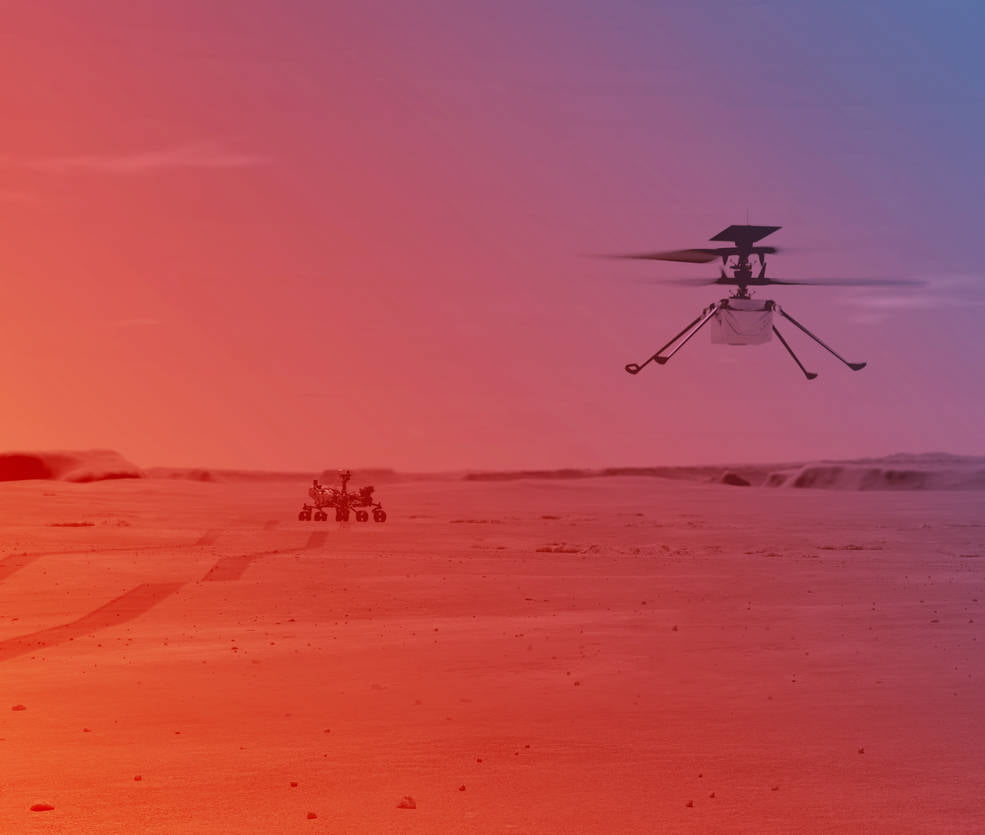Rover Perseverance has jettisoned Ingenuity’s lower cover in preparation for the first ever test flight on another planet. Ingenuity is of course the helicopter the NASA engineers came up with to perform this feat. Though Mars has less gravity than Earth it also has 99% less atmosphere and the air we take for granted on Earth to float our helicopters here is not going to be exactly the same science on Mars. Ingenuity weighs in at 4 pounds or 1.8 kilograms but before powered flight can be tested numerous milestones must be met before the rotorcraft can ‘take off.’ Ingenuity currently remains affixed to the underbelly of Perseverance and now with only a few restraining bolts holding the helicopter to the bottom of the rover NASA scientists and engineers have projected the flight testing will occur sometime after April 8th. Perseverance is currently in transit to the Airfield where Ingenuity will be deployed.

First and foremost the deployment of Ingenuity is a technology demonstration that will show NASA and partners that they can perform powered flight in an atmosphere much different than Earth’s. If it’s successful it gives us another tool and vantage point which would expand horizons and give us a new perspective and possible new directions to aim current and future scientific experiments. However, flying in the the Mars atmosphere presents it’s own set of issues including freezing overnight temperatures which could harm the delicate electronics, atmospheric density and the fact that Mars receives about half the energy in sunlight that the Earth receives which has always been a matter of utmost importance on NASA missions as many of the devices, satellites and rovers require solar regeneration of power cells for proper operation. Though Perseverance does have its own radioisotope thermoelectric generator (RTG) to create power and keep components warm and has proven it’s worth since the days of Apollo. Charging of Ingenuity’s batteries, keeping them charged, and keeping the electronics on plus a small solar cell affixed above the rotors will help to keep Ingenuity warm and charged during it’s 30 day testing cycle.
The Airfield is a 33 foot by 33 foot (10 meters squared) patch of Martian earth which is being selected for being level throughout the the area and clear of any possible obstructions which might interfere with the test of the Ingenuity helicopter. The helicopter deployment process will take six sols (6 days 4 hours on Earth) as there is an intricate deployment mechanism which holds Ingenuity in place on the underside of the rover and entails releasing bolts and cutting restraining wires. These processes will be taken step by step over a 3-5 day period. Once the final mechanisms holding Ingenuity in place are cut the and the helicopter falls (gently) to the Martian surface these three things will have been confirmed: Ingenuity’s four legs are on the ground, the rover drove away from Ingenuity about 16 feet (5 meters) and that both the helicopter and Perseverance are communicating with each other. All of this will be confirmed when Perseverance sends back images of the process. Only upon completion of all prerequisite steps can the first flight tests take to air.
So we’ll keep an eye on the news coming from NASA and I’ll update as soon as new information becomes available. Following are some events NASA is involved in and making current news.
NISAR – Earth Satellite
Earth observations will be taken to new heights with the development of this satellite, a joint mission between our Jet Propulsion Laboratory and the Indian Space Research Organisation. Goals for the NISAR mission include spotting potential natural hazards and monitoring rising sea levels
Supersonic Flight – NASA Climate Service
Could loud sonic booms be reduced to quiet thumps? New innovative technology on our X-59 supersonic aircraft aims to do just that. Before it can take flight, we will need to validate the X-plane’s acoustic signature, using a ground recording system.
Solar Power on the Moon – 5 Companies
NASA is working with industry on vertical solar arrays for Artemis missions on the Moon’s surface. Five companies will advance preliminary technology design that could provide a reliable, sustainable power source for habitats, rovers, and even construction systems.
Green Run Hot Fire Test Complete
The largest rocket element we have ever built – the core stage of the Space Launch System (SLS) rocket – fired its four engines for a full eight minutes on Thursday, March 18, at our Stennis Space Center near Bay St. Louis, Mississippi.
Send a Pledge to the Moon
We’re going to land the first woman and next man on the Moon and we need YOU to help us with a Pledge of the Artemis Generation to Explore. Students, send us a recorded video pledge and we’ll send it to the Moon aboard the Artemis I mission.
